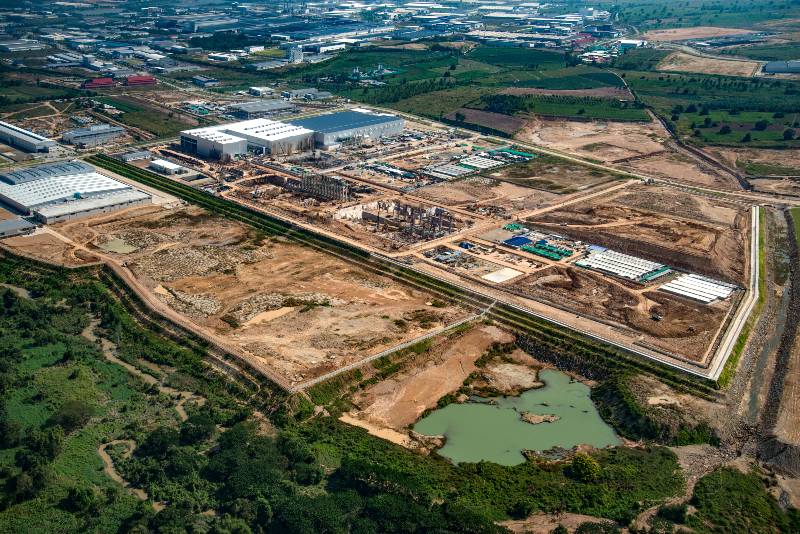A sale-leaseback is a transaction in which the owner of a property sells it to a tenant and then leases it back from them. This can be a great way for business owners to unlock some of the value tied up in their property, while still retaining use of it. In this blog post, we will discuss what sale-leasebacks are, how they work, and how you can benefit from them!
In the third quarter of 2020, sale-leasebacks accounted for about 12 percent of all single-tenant transactions, a 50% increase from the 8 percent they did in the third quarter of 2019.

What is a sale-leaseback?
A sale-leaseback is a type of real estate transaction in which an owner decides to sell their property to an investor. Rather than vacate the property after the sale, the owner continues to occupy the property by leasing it back from the new owner. This type of transaction can be beneficial for both parties involved.
For the owner, it can provide a lump sum of cash that can be used for other purposes. For the investor, it can provide a steady stream of income and the potential for appreciation if the property is sold in the future.
However, sale-leasebacks can also be complex transactions that should be carefully considered before entering into.
How does a sale-leaseback transaction work?
In a sale-leaseback transaction, the seller of the asset becomes the lessee and the purchaser becomes the lessor. This type of arrangement is often used by businesses who want to raise money by selling an asset, but still need to use that asset on a regular basis. For example, a company might sell its factory to an investor and then lease it back, allowing the business to continue using the facility while also freeing up capital.
For the purchaser, it offers the potential for a steady stream of income from the lease payments. Sale-leasebacks are often used for real estate, but can also be used for other types of assets such as machinery or vehicles.
What is the purpose of a sale-leaseback?
A sale-leaseback is a financial transaction in which a company sells its property to an investor and then leases it back from the investor. This type of arrangement can provide several benefits for businesses, including the ability to raise cash quickly and efficiently. In many cases, the cash generated from a sale-leaseback can be more effectively used in the operation of the business than if it were tied up in the real estate asset.
Additionally, sale-leasebacks can help to free up capital that might otherwise be used to finance the purchase of the new property. As a result, sale leasebacks can be an attractive option for companies looking to maximize their financial resources.
Why Motivation the Previous Owner to do a sale-leaseback?
The original owner of a property sells it to an investor in a sale-leaseback transaction, after which the investor leases the property back from the seller.
For several reasons, this kind of transaction may be advantageous. It offers the owner the option to continue using the space and carrying on business there or to leave the facility when the lease expires.
Furthermore, it enables the owner to raise money to reinvest in their company or pay off existing debt. The unnecessary burden of owning, running, and maintaining a real estate asset is also removed.
Besides, it permits the owner to arrange financing without worrying about covenant issues. Thus, the owner who has become a tenant may benefit tax-wise; A sale-leaseback can be a useful tool for business in general.
How do the buyer/investor benefits?
There are several benefits to the buyer/investor that make this type of sale-leaseback agreement a good choice. The following are some of the key advantages:
Access to Cash
When you sell your property through a sale-leaseback, you are selling the property and then leasing it back from the buyer. This can be a great way to get extra cash to reinvest in your business while still retaining possession of the property. Typically, a sale-leaseback transaction results in greater financial gain than a standard mortgage loan. This is because capital gains tax can reduce the amount of money you make from a sale. Therefore, the best option is typically a sale-leaseback where the property is sold for a modest profit or loss.
Better balance sheet
Though they may seem like complex transactions, sale leasebacks and operating leases can be beneficial for buyers and investors. In a sale-leaseback, the seller receives cash for their property, which can then be used as working capital.
The mortgage is also removed off the balance sheet in this kind of transaction, which might reduce debt levels. For an operating lease, the rent is typically not treated as a liability on the balance sheet. As a result, if more borrowing is ever required, the current ratio may be improved.
Ultimately, these types of transactions can be advantageous for those looking to increase liquidity or improve their financial position.
What are the tax advantages of a sale-leaseback?
A sale-leaseback is a financing arrangement in which the owner of a property sells it to an investor and then leases it back from the investor. Sale-leasebacks are often used to raise capital, as the proceeds from the sale can be used for other purposes.
From a tax perspective, sale leasebacks can be advantageous for both buyers and sellers. For sellers, the main benefit is that rental payments under the lease are fully deductible. This can lead to significant tax savings, especially if the property being leased is income-producing. For buyers, the advantage is that they can depreciate the property over the term of the lease agreement. This can provide a significant deduction, which can offset any income generated by the property.
What Market Conditions are ideal for a Sale-Leaseback?
Businesses affected by the Pandemic
To date, the effect of the COVID-19 pandemic has been far-reaching and profound, with businesses across a wide range of industries feeling the squeeze. In particular, many retail and hospitality businesses have been forced to close their doors, either temporarily or permanently. This has led to a sharp decline in revenue for these businesses, and many are now struggling to stay afloat. As a result, some business owners are considering a sale-leaseback as a way to generate much-needed cash.
Additionally, sale leasebacks are particularly well suited for use in times of tight lending conditions and limited working capital. By freeing up capital that would otherwise be tied up in the property, sale leasebacks can provide a much-needed injection of liquidity. In addition, sale leasebacks can help to diversify a portfolio and reduce exposure to volatile markets.
As a result, when market conditions are challenging, sale leasebacks can be an effective tool for investors and property owners alike.
Ideal Market Cycle to do this
As a general rule, the best time to do a sale-leaseback is when the CRE market is transitioning from peak to recession. That’s because you’re more likely to get a higher sales price near the peak of the market and lower leasing costs as the market transitions into a recession.
Of course, there are always exceptions to this rule, so it’s important to work with a qualified commercial real estate professional who can help you assess the current market conditions and make the best decision for your situation.
So, it’s important to remember that if you’re looking to maximize your return on investment, the ideal time to do a sale-leaseback is during the market transition from peak to recession.
Risks of Sale-Leaseback
The risks of sale-leaseback transactions are often overlooked or underestimated. In addition to the normal risks of the underlying real estate investment, there are additional risks that need to be carefully analyzed and considered before entering into a sale-leaseback agreement.

Risks for Previous Owners
Future market rents
When a property owner decides to sell their property and lease it back from the new owner, they are exposing themselves to several risks. The most significant risk is that future market rent payments may be higher than the rent they are currently paying. If this happens, the previous owner will be forced to relocate their business or face the prospect of paying significantly higher rents.
Additional space the company wants may not be available
One major risk is that the additional space the company wants may not be available. The new owner may have their plans for the property, or they may simply not be willing to lease out additional space. As a result, the leasing company may find itself needing to relocate once its lease expires.
The hassle of moving could be very disruptive for clients and employees
Although it may seem like a quick and easy way to raise capital, sale leasebacks can often be more trouble than they’re worth, especially for the previous owner of the property. One of the biggest risks is the hassle factor. Moving to a new location can be disruptive for both employees and clients, and it can take several weeks or months to get settled into a new space.
Tenant improvement costs
Another significant risk is that the tenant improvement costs associated with moving to a new space can be substantial. These costs can include things like painting, carpeting, and signage, and they can quickly add up. In some cases, the tenant improvement costs may even exceed the cost of the property itself.
Risks for Buyers
Tenant’s creditworthiness
For buyers, the biggest risk is tenant creditworthiness. If the tenant does not have a strong credit history or is otherwise financially unstable, there is a risk that they will default on their lease payments. This could leave the buyer with a property that is difficult to lease to another tenant. As a result, it is important to carefully vet any potential tenants before entering into a sale-leaseback agreement.
Tenant defaults on the lease (going bankruptcy)
Sale leasebacks can be a great way for companies to raise capital, but they can also be a risk for buyers. One of the biggest risks is tenant defaults on the lease. This can happen if the tenant goes bankrupt or is otherwise unable to make their lease payments. If this happens, the buyer may be stuck with an empty property that they are still responsible for paying for.
Change in property values due to recession or other economic factors
One such risk is that the value of the property may decrease during the lease period, due to factors such as recession or other economic conditions. If this happens, the buyer may find it difficult to resell the property for a profit at the end of the lease.
What is a Sale-Leaseback FAQs
What is a sale-leaseback example?
A sale and leaseback transactions in which the owner of an asset sells it to another party and then leases it back from the new owner. The lease is typically for a long-term period, and the lease term are agreed upon at the time of the sale. Sale and leasebacks are often used as a way to raise capital, as the owner can receive a lump sum of cash upfront while still retaining the use of the asset.
For example, a company might sell its warehouse to an investor and then lease it back for 10 years. The company would receive a cash infusion that could be used for expansion or other purposes, while still being able to use the warehouse for its operations. Sale and leasebacks can also be used as a way to finance the purchase of an asset by spreading out the payments over time.
In this case, the lessee would make periodic payments to the lessor, with the ownership of the asset eventually transferring to the lessee at the end of the term.
Is a sale-leaseback a good idea?
A sale-leaseback can be a great way to raise money for your business. It allows you to sell your property and then lease it back from the buyer, giving you the capital you need without having to give up ownership. This can be a great way to free up cash flow or to finance expansion plans. And because you’re still leasing the property, you don’t have to worry about finding a new place to do business.
Conclusion
Overall, sale-leasebacks can be a great way to unlock some of the value of your business’s real estate holdings. They give you the ability to maximize your gains from properties that would otherwise just sit idle. It’s up to you as a business owner to decide if this structure is right for your company and its goals, but it’s worth investigating when it comes time for your next deal.
If you have any questions or want to explore this option further, please call or schedule a free consultation. I would be happy to discuss how this could work for you and answer any questions that you have.




